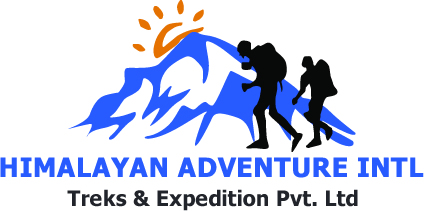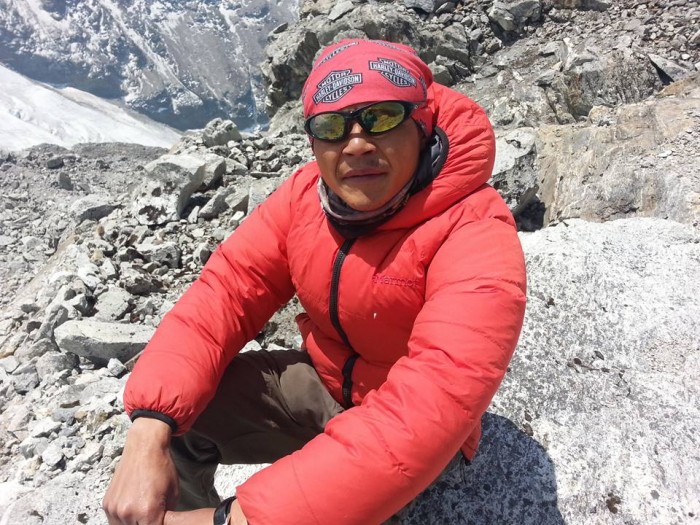The Cho La Pass Trek is a thrilling adventure in the Everest region of Nepal, offering trekkers a chance to explore the breathtaking landscapes of the Gokyo Valley, ascend Gokyo Ri, and cross the high-altitude Cho La Pass (5,420m). Whether you're looking to join a group or hire a guide for a more personalized experience, this trek combines scenic beauty with cultural immersion and high-altitude challenges.
Full Package Cost for Cho La Pass Trek
The full package cost for the Cho La Pass Trek typically ranges from $1,500 to $2,500 per person, depending on the services and inclusions you select. This package usually covers:
- Airport transfers
- Domestic flights (Kathmandu to Lukla and back)
- Accommodation in Kathmandu and teahouses during the trek
- Permits (Sagarmatha National Park and TIMS)
- Three daily meals on the trek (breakfast, lunch, and dinner)
- Experienced trekking guide and porter
- Necessary trekking equipment
- Emergency evacuation arrangements (insurance required)
- Government taxes and service charges
For a luxurious experience, including helicopter services and upgraded lodges, the price can go beyond this range.
Join Group Gokyo Valley Trek Cost
For trekkers looking to join a group for the Gokyo Valley Trek, the cost can be more affordable, usually ranging between $1,000 and $1,800. Group treks provide the benefit of shared costs for guides and porters, making it an economical choice without compromising on safety and services.
Hiring a Guide for Gokyo Ri Trek Cost
Hiring a professional guide for the Gokyo Ri Trek ensures that you have an experienced local to navigate the trails, manage logistics, and provide insights into the region's culture. The cost of hiring a guide typically ranges from $25 to $40 per day, depending on the guide's experience and language proficiency. Some guides also act as porters, carrying light loads.
Transportation Cost
- Flight (Kathmandu to Lukla): The round-trip flight costs around $217 one way for foreign nationals. Prices fluctuate depending on the season.
- Private Jeep/Car: If you prefer to drive to trailheads like Jiri, which takes you through the lower Solu region, a private vehicle costs between $150 and $250 depending on group size and vehicle type.
- Local Buses: These are a budget-friendly option, with fares between $10 and $20, but they are less reliable and more time-consuming.
Necessary Equipment List
Packing the right equipment is essential for your safety and comfort during the Cho La Pass Trek. Here's a list of must-have gear:
- Clothing: Warm layers (fleece and down jacket), moisture-wicking base layers, waterproof outerwear, thermal gloves, trekking pants, and a sun hat.
- Footwear: Waterproof trekking boots with ankle support, warm socks, and gaiters.
- Accessories: Sunglasses (UV protection), trekking poles, headlamp with extra batteries, water purification tablets, reusable water bottle, personal first-aid kit.
- Sleeping Gear: A sleeping bag rated for -10°C to -15°C is necessary for cold nights.
- Other Essentials: Sunscreen, lip balm, quick-dry towel, and snacks.
Permit Cost
You will need the following permits for the Cho La Pass Trek:
- Sagarmatha National Park Permit: Around $30
- TIMS (Trekkers' Information Management System): Approximately $20
- Local Municipality Fee (for Khumbu region): Around $30
Accommodation Cost
During the trek, you’ll stay in teahouses, which provide basic accommodations. The cost per night ranges from $5 to $15 depending on the location and season. In peak season, it’s advisable to book in advance to secure a room.
Food Cost
Meals are provided by the teahouses, and you can expect to pay between $5 to $10 per meal. As you ascend to higher altitudes, the cost of food increases due to transportation challenges. Budget around $20 to $30 per day for meals.
Porter cum Guide Cost
Hiring a porter cum guide is a great option for budget-conscious trekkers. This service typically costs between $30 to $40 per day, and the individual will both carry your gear and guide you through the trek. This can reduce the need for hiring two separate people, saving on costs.
Local Porter Cost
If you prefer to hire a local porter solely to carry your load, expect to pay around $20 to $25 per day. Porters typically carry between 20kg to 25kg of luggage.
Hiring a Female Guide: Cost and Benefits
For female travelers seeking extra comfort, hiring a female guide is a great option. Female guides bring an additional sense of security and cultural understanding, especially for women trekking solo. The cost is similar to male guides, ranging between $25 to $40 per day.
Altitude Sickness (AMS) and Prevention
Acute Mountain Sickness (AMS) is a common concern when trekking at high altitudes like Cho La Pass. Symptoms include headaches, nausea, dizziness, and shortness of breath. To prevent AMS:
- Ascend gradually, allowing your body to acclimatize.
- Stay hydrated and avoid alcohol.
- Take rest days as needed, particularly in places like Namche Bazaar and Gokyo.
- Consider taking Diamox (consult your doctor before using it).
Best Time to Trek Cho La Pass
The best time to trek the Cho La Pass is during the pre-monsoon (March to May) and post-monsoon (September to November) seasons. These months offer clear skies, stable weather, and breathtaking views of the surrounding peaks.
Duration of the Cho La Pass Trek
The Cho La Pass Trek typically takes 14 to 18 days depending on the itinerary and acclimatization schedule. It includes visits to Namche Bazaar, Gokyo Lakes, Gokyo Ri, and crossing the Cho La Pass to reach Everest Base Camp.
Services Offered by Himalayan Adventure Intl Treks
Himalayan Adventure Intl Treks provides a range of services for the Cho La Pass Trek to ensure a smooth and memorable experience:
- Tailor-made trekking itineraries to suit your needs.
- Experienced and licensed guides fluent in multiple languages.
- Porter and Porter-guide services with a focus on ethical employment.
- Comprehensive trekking packages, including accommodation, permits, and meals.
- 24/7 emergency support and helicopter evacuation coordination (if necessary).
- Female trekking guides for women travelers seeking a more comfortable experience.
- High-quality equipment rental for trekkers in need of essential gear.
The Cho La Pass Trek is an unforgettable journey through the Everest region, offering a mix of adventure, cultural encounters, and stunning landscapes. Whether you’re a solo trekker or part of a group, Himalayan Adventure Intl Treks provides all the support you need for a safe and enjoyable experience. With well-planned packages, expert guides, and essential services, you can embark on this high-altitude trek with confidence.

 Plan Your Trip Now
Plan Your Trip Now 


